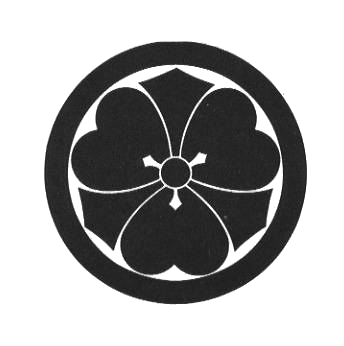1. Overview

Sakai Tadatoshi (酒井 忠利Japanese) was a Japanese samurai and daimyō who lived from 1559 to 1627, spanning the late Sengoku period and early Edo period. A prominent vassal of the Tokugawa clan, he held significant roles within the burgeoning Edo Shogunate. He served as the lord of Tanaka Domain in Suruga Province and later became the first lord of Kawagoe Domain in Musashi Province. His career culminated in his appointment as Rōjū, a high-ranking administrative position in the shogunate. He was the head of a cadet branch of the Sakai clan, specifically the Tadatoshi-ryū of the Uta-no-kami Sakai family.
2. Life
Sakai Tadatoshi's life was characterized by his dedicated service to the Tokugawa clan, marked by significant military contributions and a steady ascent through the ranks of the shogunate's administration, culminating in his role as a daimyō and a high-ranking official.
2.1. Early Life and Background
Born in 1559, Sakai Tadatoshi was the third son of Sakai Masachika, the head of the Uta-no-kami Sakai family. His mother was Myōgen-ni, the daughter of Ishikawa Kiyokane. Tadatoshi was distantly related to Tokugawa Ieyasu, which provided an early connection to the influential Tokugawa clan and shaped his early career path within their service.
2.2. Service to the Tokugawa Clan
Sakai Tadatoshi served Tokugawa Ieyasu from an early age, alongside his elder brother Sakai Shigetada. He distinguished himself militarily, earning significant commendation for his contributions during the Battle of Komaki-Nagakute. Later, in 1600, he accompanied Tokugawa Hidetada, Ieyasu's son and successor, during the pivotal Battle of Sekigahara. During the Sieges of Osaka (大坂の陣Ōsaka no JinJapanese), which took place from 1614 and led to the consolidation of Tokugawa rule, Tadatoshi was entrusted with the crucial responsibility of serving as the caretaker of Edo Castle while the main Tokugawa forces were engaged in the campaigns.
2.3. Governance as Daimyō and Later Career
In 1590, following Tokugawa Ieyasu's transfer to the Kantō region, Sakai Tadatoshi was granted an initial holding of 3000 koku in Kawagoe. After the Battle of Sekigahara in 1600, he received an additional 7000 koku from Ieyasu, bringing his total stipend to 10000 koku, establishing him as a daimyō. In 1601, he was transferred to become the lord of Tanaka Domain in Suruga Province. His land holdings were further increased in 1609 by another 10000 koku increment, making his total 20000 koku. He was then transferred back to Musashi Province to become the first lord of Kawagoe Domain. Throughout his career, his influence grew, and he received further increments to his land, eventually administering a domain with a total of 37000 koku. He rose to the esteemed position of Rōjū within the Edo Shogunate, a testament to his trusted standing and administrative capabilities at the highest levels of government.
3. Family
Sakai Tadatoshi was the third son of Sakai Masachika and Myōgen-ni, who was the daughter of Ishikawa Kiyokane. His formal wife was Hōkyō-in, the daughter of Suzuki Shigenao.
Tadatoshi had several children. His notable sons included:
- His eldest son, Sakai Tadakatsu (1587-1662), who succeeded him as head of the family.
- His second son, Sakai Tadayoshi (1589-1663).
- Other sons, whose mothers are not explicitly stated, included Sakai Tadashige, Sakai Tadahisa, Sakai Tadamatsu, and Sakai Tadatsugu.
He also had several daughters, who were married into prominent families: one became the wife of Takagi Masatsuna, another the wife of Kawai Munetoshi, and a third the wife of Miura Yoshimasa.
4. Death
Sakai Tadatoshi died on the 14th day of the 11th month of Kan'ei 4 (traditional Japanese calendar), which corresponds to December 21, 1627. He was 69 years old by traditional East Asian age reckoning at the time of his passing.
5. Assessment and Legacy
Sakai Tadatoshi's career is marked by his steady rise through the ranks of the Tokugawa clan and the Edo Shogunate. His contributions to major military campaigns like the Battle of Komaki-Nagakute and the Battle of Sekigahara solidified his position as a trusted military commander. As a daimyō, his tenure overseeing Tanaka Domain and becoming the first lord of Kawagoe Domain showcased his administrative abilities and loyalty to the shogunate. His ultimate appointment to the influential post of Rōjū underscores his significant political impact and the high regard in which he was held by the Tokugawa leadership. He established the Tadatoshi-ryū, a cadet branch of the Sakai clan's Uta-no-kami family, which continued to play an important role in the shogunate through his successors, notably his eldest son Sakai Tadakatsu.